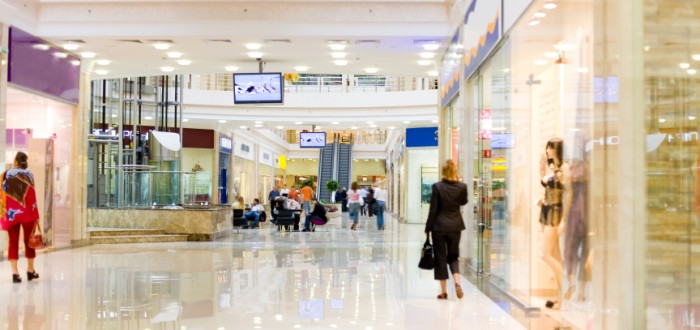Asbestos used in constructing many early indoor malls put builders at risk for mesothelioma. But it turns out that the shoppers who later flocked to those completed retail centers were no less in danger, a Feb. 1, 2014, article in The Canberra Times suggests.
Specifically, the newspaper warned that mall patrons of a major retail center in that nation’s capital may have been exposed to asbestos if they visited stores there during the years 1963 through 1988.
It is a warning experts say applies as well to shoppers who spent time inside American malls throughout that same approximate era.
In the Australian mall situation, the asbestos threat came mainly from vermiculite-based insulating foam sprayed under the sheets that form the massive structure’s roof, The Times reported.
Apparently, very small but harmful quantities of micro-fine dust from this material somehow found their way into the mall’s air as the building aged. The dust may have been inhaled by shoppers while they browsed and made purchases, the newspaper hinted.
Vermiculite Laced with Asbestos from Same Montana Mine
The Times said the asbestos danger for the most part ended in 1988 when the mall underwent major renovation. The renovation included removal of all known traces of the toxic mineral.
By that time, everyone involved with the renovation was well-aware of the long-term harm asbestos could cause if inhaled or swallowed. Therefore, work crews were properly attired in protective gear as they went about the task of stripping the hazardous insulation from the roof’s interior-facing side.
Approximately 29,500 cubic feet of the material had to be ever so carefully taken down and hauled away, the paper reported.
Vermiculite is a mineral relative of asbestos. Unlike its cousin, however, vermiculite does not cause mesothelioma.
Unfortunately, the vermiculite insulation product used in the Canberra mall project was contaminated with asbestos, The Times relayed.
This contamination was revealed to have occurred at the site where the vermiculite was mined — the town of Libby, Mont. In addition to yielding vermiculite, this mine also contained a rich vein of particularly toxic tremolite asbestos.
According to the Canberra Times, this one mine supplied an estimated 80 percent of the world’s tremolite during the 20th century.
The newspaper said tremolite is so hazardous that anti-asbestos activists have taken to referring to Libby as America’s Chernobyl due to the disturbingly high number of mesothelioma cases arising over the years from this town of 12,000. (Chernobyl is the name of a city in the Ukraine where a nuclear reactor meltdown in 1986 caused one of history’s most devastating man-made environmental disasters.)
U.S. Pioneered Malls and Their Use of Asbestos
The Canberra mall was not the only one in the world to employ asbestos in its construction. American malls — pioneers of the concept of massive, enclosed, suburban-based shopping centers — also made extensive use of asbestos right from the beginning.
Malls have existed in the U.S. since the early 1900s. The first is believed to have been built in 1915, in downtown Duluth, Minn. The Lake View Store at Morgan Park was a three-level structure and tiny by modern mall standard). Asbestos helped this mall promise fire safety for all who flocked through its doors.
Up until the mid-1950s, the vast majority of American malls were open-air, not enclosed. So it wasn’t necessary (or even possible) to extensively insulate them with asbestos to help keep shoppers from getting overheated in the summer and chilled in the winter.
The name “mall” came into wide use following the opening of New Jersey’s Bergen Mall. This 1.5-million-square-foot center debuted in 1957 with 100 stores and 8,600 parking spaces. Now known as The Outlets at Bergen Town Center, it started as an outdoor shopping plaza but was fully enclosed 15 years later.
At about this same time, mall owners and architects began abandoning the open-air concept in favor of enclosed malls. They also built these shopping hubs larger and larger, a trend encouraged by tax and land-use policies that rewarded mall development far from congested downtown areas.
But, the bigger the malls became, the more asbestos they contained.
By the 1980s, a new twist served to put even more asbestos inside malls — the introduction of terrazzo tiles to cover floors.
Previously, the flooring of choice was carpeting. But mall operators figured out that shoppers don’t walk as easily or quickly across carpeting as they do tiles. They worried that carpeting was preventing shoppers from visiting as many stores as possible in the limited time planned for a shopping trip.
Terrazzo tiles also improve a mall’s atmospherics, but they must be installed by applying an adhesive to the back of each one. What worked best was cement adhesive. Unfortunately, this type of cement frequently contained asbestos.
Health experts advise individuals who have patronized older malls to be alert for sudden and unusual changes in health status — changes that might include symptoms of mesothelioma. This call for watchfulness forms the underlying message of The Canberra Times article on the Australian capital’s mall asbestos problem.

